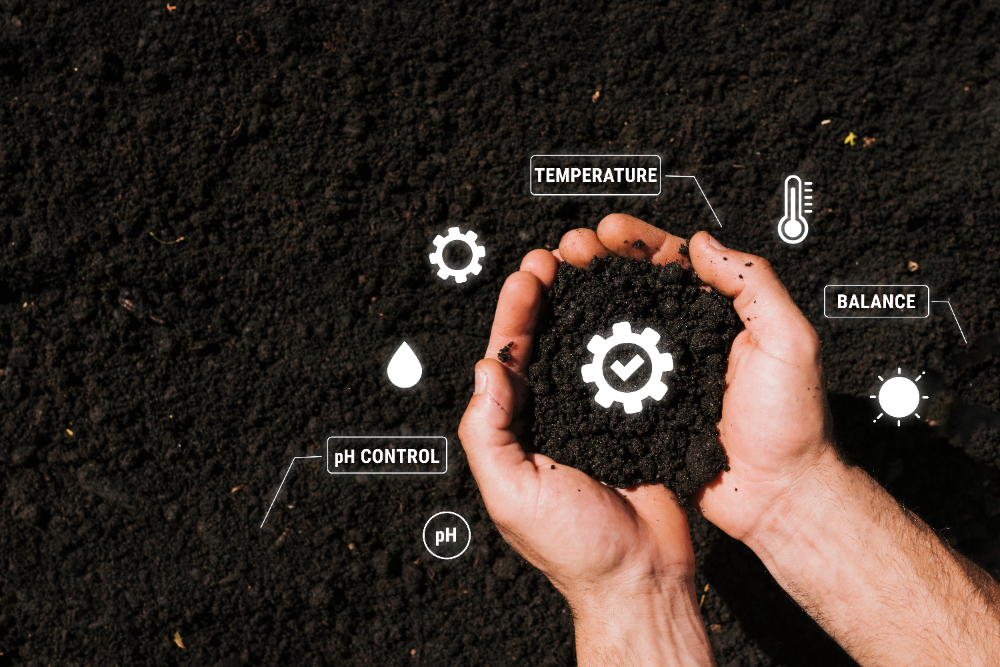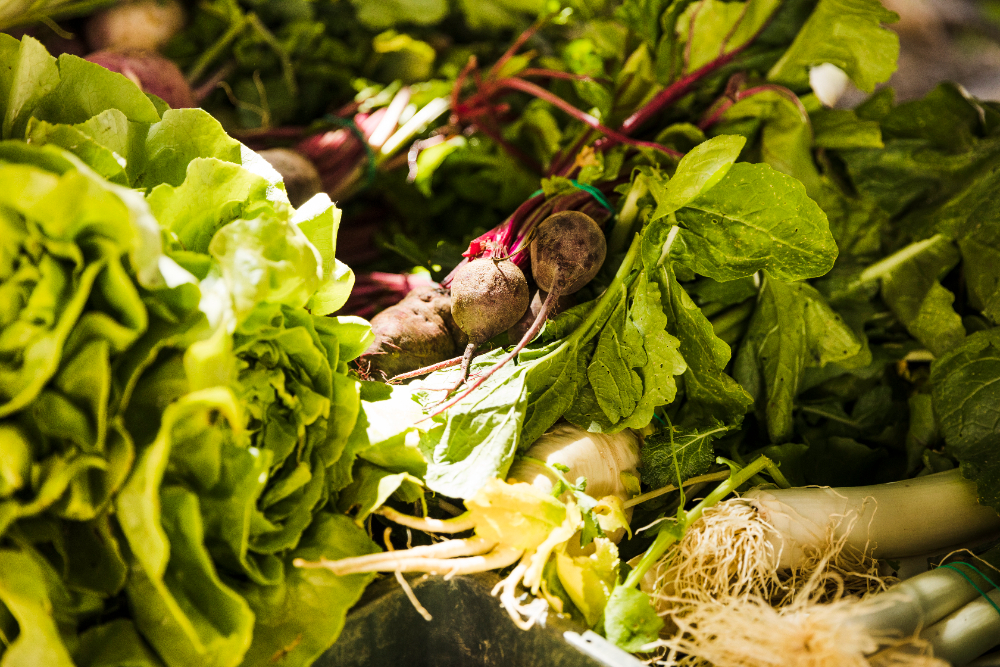Benefits of Indoor Air Purifying Plants

Foliage Plants, Ornamental Gardening Benefits of Indoor Air Purifying Plants Air-purifying plants act as natural filters, which absorb toxins and release oxygen. They improve the overall air quality. In Pakistan, especially in urban apartments and homes, where ventilation is scarce, these plants help reduce indoor air pollution. Benefits of Indoor Air Purifying Plants in Pakistan Health Benefit: Plants help alleviate respiratory problems by reducing airborne toxins and dust. Humidity Control: Many plants are emitting moisture, thus maintaining indoor humidity at a comfortable level. Relaxation: The ambiance provided by the greenery makes people feel relaxed and brings good mental health. Best Air-Purifying NASA-Approved Plants for Pakistani Houses: The following plants have been NASA-approved for their exceptional ability to purify the air and thus best suited for Pakistani houses. Snake Plant (Sansevieria) Known as the “Mother-in-Law’s Tongue,” the Snake Plant is a hardy, low-maintenance option for beginners. It absorbs toxins like formaldehyde and benzene while releasing oxygen at night, making it ideal for bedrooms. Peace Lily (Spathiphyllum) The Peace Lily is a beautiful plant with white blooms that effectively removes pollutants like ammonia and benzene. It thrives in indirect sunlight and requires only occasional watering. Areca Palm (Dypsis lutescens) This beautiful plant is a natural humidifier, so it is ideal for dry climates. It removes toxins such as carbon dioxide and improves indoor air quality. Aloe Vera Aloe Vera not only purifies the air by removing formaldehyde but also has medicinal properties. It is easy to grow and thrives in bright, indirect sunlight. Money Plant (Epipremnum aureum) Money Plant: This is very commonly used in Pakistan because of its easy adaptability and ability to purify the air. It is very effective at filtering out toxins like xylene and carbon monoxide. Rubber Plant (Ficus elastica) The rubber plant can filter out formaldehyde and absorbs carbon dioxide. It is attractive with its shiny broad leaves. Low-Maintenance Air-Purifying Plants for Pakistani Apartments: If you’re new to indoor gardening or have a busy schedule, low-maintenance air-purifying plants are your best bet. Here are a few options: Spider Plant (Chlorophytum comosum): Easy to care for and highly effective at removing indoor pollutants. Dracaena: Available in various varieties, Dracaena plants are hardy and require minimal watering. Philodendron: Known for its trailing vines, this plant is perfect for hanging pots and requires low light. These plants do not require much care and are ideal for small apartments in Pakistan. Where to Get Air-Purifying Indoor Plants in Pakistan: You can easily find indoor plants in Pakistan from various nurseries and online stores. Many nurseries in the major cities of Karachi, Lahore, and Islamabad offer a variety of air-purifying plants. Online Stores: Websites like Patari Plants, khaad.pk, and other local e-commerce platforms offer a variety of indoor plants with doorstep delivery. Be sure to look for healthy plants with lush foliage and avoid those with yellowing leaves or pest infestation. How to Care for Air-Purifying Plants in Pakistani Homes: These plants are usually low maintenance but a little attention goes a long way in keeping them healthy and thriving. Light: Most air-purifying plants prefer bright, indirect sun. Avoid direct sunlight which can burn the leaves of such plants. Watering: Overwatering is often a problem. Water plants only when the top soil feels dry to the touch. Humidity: Misting leaves occasionally, for tropical plants like Peace Lily and Areca Palm will be helpful, especially for dry climates. Fertilizing: Apply a balanced fertilizer every 4–6 weeks in the growing season (spring and summer) to encourage healthy growth. Pest Control: Check on plants regularly for pests such as spider mites or aphids. Wipe leaves with neem oil to prevent pests. How to Add Air-Purifying Plants to Your Home Decor: Add an air-purifying touch to your home decor with indoor plants. Here are some suggestions: Create a Green Corner: Arrange plants like Snake Plants, Money Plants, and Rubber Plants in different-sized pots for a lush indoor garden. Hang Plants: Use hanging baskets for trailing plants like Philodendron or Spider Plants to save space. Use Decorative Pots: Choose ceramic, woven, or wooden pots that match your home’s aesthetic. Place in Key Areas: For both function and style, keep peace lilies in the living room, Snake Plants in the bedroom, and aloe vera in the kitchen. Conclusion: Air-purifying foliage plants are an excellent addition to Pakistani homes that give health benefits, aesthetic appeal, and a greener indoor environment. From low-maintenance options like Snake Plants and Spider Plants to more decorative choices like Peace Lilies and Rubber Plants, there’s a plant for every lifestyle and home. Begin your journey today towards cleaner indoor air and more beautiful living space by choosing the best plants for your needs. Tags : Home Gardening Tips, Ornamental Gardening Share this :
Composting for Soil Improvement: A Guide for Gardeners

Soil Improvement Composting for Soil Improvement: A Guide for Gardeners Composting is one of the most efficient and sustainable methods to create healthy soil for your garden. Recycling organic wastes into nutrient-rich material can improve soil structure, fertility, and moisture retention. Here is a step-by-step guide on how Pakistani gardeners can start with composting for better soil improvement. 1. What is Composting? Composting is the process of breaking down organic materials, such as kitchen scraps, yard waste, and plant residues, into humus, which enriches the soil. This natural process can help you reduce waste while boosting the health of your garden. 2. Why Composting is Important for Pakistani Gardens Improves Soil Fertility: Compost adds essential nutrients to the soil, ensuring healthy plant growth.It helps improve the structure of soil through better aeration and water holding capacity in the diverse climatic regions of Pakistan. Eco-friendly: Composting decreases dependence on chemical fertilizers, thus harmful to the environment. Reducing Waste: You minimize waste going into landfills through composting of kitchen as well as garden waste 3. How to Start Composting in Pakistan Choose a Suitable Location: Find a shady, well-ventilated spot in your garden where the compost pile will not be disturbed. Select a Composting Container or Bin: You can use a composting bin or create a compost heap. In Pakistan’s warm climate, using a bin will help regulate temperature and moisture levels. Gather Composting Materials: Composting requires a mix of green materials (nitrogen-rich) and brown materials (carbon-rich). Green materials: Kitchen scraps (fruit and vegetable peels, coffee grounds, tea bags), grass clippings, green leaves. Brown materials: Dry leaves, straw, cardboard, sawdust, shredded paper. Maintain the Right Balance: The ideal composting ratio is about 3 parts brown materials to 1 part green materials. This balance ensures the right carbon-to-nitrogen ratio for decomposition. 3. Steps to Create Compost Layering: Begin by layering the brown materials at the bottom followed by a layer of green materials. Keep alternating layers. Turning the Pile: Aerating is the key to fast decomposition. Turn the pile with a pitchfork or shovel every few weeks to speed up the process. Moisture: The compost pile should be moist but not too wet. In Pakistan’s hot climate, you may need to water the pile occasionally to keep it damp. Patience: Composting takes time, generally 2-3 months, depending on weather conditions and the materials used. When the compost turns dark and crumbly, it’s ready to use. 4. Common Composting Problems and Solutions Bad Odor: This usually occurs when the compost pile is too wet or has too many green materials. Add more brown materials and ensure the pile is well-ventilated. Slow Decomposition: If your compost isn’t breaking down quickly, try turning the pile more often or add more green materials to increase nitrogen content. Pests: Avoid adding meat, dairy, or oily foods to your compost pile, as these attract pests. Stick to plant-based materials. 5. Using Compost in Your Garden Once your compost is ready, you can mix it into your garden soil to improve its texture, drainage, and nutrient content. Compost works well in vegetable gardens, flower beds, and around trees and shrubs. For Vegetable Gardens: Mix compost into the soil before planting. It will give nutrients needed for healthy growth. For Flower and Shrub Beds: Add a layer of compost over the soil and lightly till it into the soil for greater fertility. 6. Advantages of Composting for Pakistani Gardeners Economical: The use of chemical fertilizers decreases through composting, thereby saving the expense in the long run. Environmental Impact: Composting reduces waste in the environment and promotes sustainable garden practices. Better Plant Development: Plants grow better in such nutrient-rich, aerated soils, leading to healthier gardens with higher productivity. Composting is one of the easiest and most effective ways to boost the health of your garden soil in Pakistan. It enhances your garden’s productivity and helps contribute to a healthier, more sustainable environment. Start small, experiment with different materials, and enjoy the long-term benefits of composting in your garden. Happy composting! Tags : Home Gardening Tips Share this :
Why Grow Organic Vegetables at Home?

Edible Gardening, Vegetables Why Grow Organic Vegetables at Home? Home gardening provides various benefits. Starting from the availability of pesticide-free fresh vegetables, it’s cost-effective and eco-friendly. The achievement from tending to the plants and when those plants are plucked as vegetables gives a high sense of fulfillment. Diverse climatic conditions in Pakistan provide an opportunity for growing both cool-season vegetables like spinach and carrots, and warm-season vegetables like tomatoes and cucumbers. How to Select the Right Vegetables: The selection of the right vegetables for your organic garden depends on the season and your region’s climate. Cool-season vegetables: Spinach, lettuce, radishes, cauliflower, and carrots thrive in winter. Warm-season vegetables: Tomatoes, cucumbers, okra, and eggplants are perfect for summer. Perennial options: Herbs like mint, coriander, and basil grow year-round and require minimal care. Selecting vegetables that are well-suited to your local weather will ensure better yields and less maintenance. Beginners can start with easy-to-grow options like spinach, chilies, or mint. Setting Up Your Organic Vegetable Garden: To create a productive organic vegetable garden, it is very important to start with proper planning and preparation. Begin by selecting a spot that receives 6–8 hours of sunlight daily. Vegetables like tomatoes and cucumbers thrive in sunny areas, while leafy greens such as spinach can tolerate partial shade.For soil preparation enrich it with organic matter such as compost or aged manure. This will improve its fertility and gives the plants crucial nutrients for their growth. If a home gardener is preparing pots, ensure that he has the containers with proper draining holes and then fill those with a mixture of garden soils and organic compost. Lastly, raised beds are awesome options for people who have enough space in their premises. Organic Gardening Ideas for Novice Container Gardening: Use pots or containers to grow vegetables like spinach, lettuce, and chilies. Vertical Gardening: Maximize limited space with wall planters or hanging pots for herbs and climbers like cucumbers. Composting: Create your own organic fertilizer using kitchen waste like vegetable peels, eggshells, and tea leaves. These methods are easy to implement and require minimal investment, making them perfect for anyone starting with organic gardening at home in Pakistan. Planting and Watering Your Vegetables: Planting varies from one vegetable to another. For example, seed direct sowing is used for root vegetables, such as radishes and carrots. Seedlings are better placed for tomatoes and eggplants. Make sure the spacing between them is enough so that the plants can grow without competing with each other for sunlight and nutrients. Watering is an essential part of taking care of your garden. Most vegetables need water constantly, but overwatering causes root rot. Therefore, it is advisable to water early in the morning, minimizing evaporation and helping plants absorb moisture. Natural Fertilizers and Pest Control To keep the soil healthy, use natural fertilizers such as compost, cow manure, or bone meal. These enrich the soil without introducing harmful chemicals. Homemade solutions like banana peel water or eggshell powder are also excellent for adding nutrients. For pest control, avoid chemical pesticides. Instead, opt for natural remedies: Neem oil spray: Effective against common pests like aphids and caterpillars. Garlic spray: Acts as a natural repellent for insects. Promote beneficial insects: Ladybugs and spiders will help control pest populations naturally. Regularly inspect your garden to catch infestations early and address them before they spread. Harvesting Your Organic Vegetables The best part of organic gardening is harvesting your homegrown produce. Knowing when to harvest is essential to enjoy the best flavor and nutrition. Leafy greens like spinach and lettuce can be picked as soon as the leaves are large enough to eat. Root vegetables such as carrots and radishes should be pulled out when they reach their mature size, while tomatoes and cucumbers should be picked when fully ripened. Use a sharp knife or scissors to avoid damaging the plants during harvesting. This ensures that your plants continue to produce throughout the season. Overcoming Common Challenges Gardening comes with its challenges, but they are manageable with the right approach. Extreme weather: Protect plants from excessive heat with shade nets or from frost with covers during winter. Pests and diseases: Stay vigilant and address issues with natural remedies like neem oil. Limited space: Use innovative techniques such as vertical gardening or hydroponics to maximize yield in small spaces. Even beginners can get over the hurdles with proper care and patience to be able to create a thriving organic garden. Conclusion Growing organic vegetables at home in Pakistan is more than just a hobby; it’s the way to adopt a healthier and more sustainable lifestyle. With some simple techniques and following the organic gardening ideas for beginners, you can enjoy fresh pesticide-free produce right from your garden. Start small, experiment with different vegetables, and watch your garden flourish over time. Whether you are growing spinach, tomatoes, or herbs, the benefits of home gardening will undoubtedly enrich your life. Tags : Growing Fruit Trees, Home Gardening Tips Share this :
